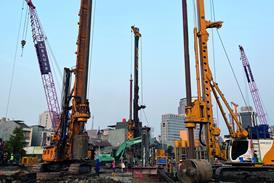Section 12 of the act requires all local authorities, registered social landlords and housing action trusts to publish policies and procedures to tackle antisocial behaviour, within six months of 30 June, when this section comes into force. These should explicitly encompass racial harassment.
Section 13 gives new powers to permit councils, RSLs and HATs to obtain injunctions against anyone affecting the housing management functions of the landlord if their conduct causes annoyance and nuisance to the landlord's tenants, members of staff or others within the neighbourhood. Landlords can also seek injunctions to prevent the unlawful use of their properties and may combine this with an exclusion order and power of arrest where there is actual, threatened or significant risk of violence.
These new powers are particularly useful in cases of racial harassment – for example, if non-tenants are repeatedly perpetrating racist behaviour on an estate, they can be excluded from the estate because they pose a risk of harm. Injunctions are not, however, generally available against minors.
Sections 14 and 15 introduce the concept of demoted tenancy – which work slightly differently depending on whether the landlord is a council or RSL and whether the tenant is a secure or an assured tenant. In the case of a local authority secure tenancy, the tenancy can be demoted to what is effectively an introductory tenancy for 12 months. For an RSL seeking possession against a secure or assured tenant, the tenancy may be demoted to an assured shorthold tenancy for 12 months.
Given the possibility of possession and suspended possession in cases of racial harassment, it is difficult to gauge how the courts will react to the alternative of demoted tenancy. When deciding which order to seek, landlords must weigh up whether the victim needs to be protected by moving the perpetrator from their home, or whether a lesser order is sufficient.
It will be important to present evidence of the devastating consequences of racial harassment for the victims
Judges will be required to consider the effect on the victim when deciding whether to evict, so it will be important to present evidence of the devastating consequences of racial harassment for victims.
Parental responsibilities
Parenting orders have been strengthened, making it possible to include orders requiring parents to attend residential courses. The use of parenting contracts offers the opportunity to work with the parents of young children who may be perpetrators of racial harassment, against whom injunctions cannot be taken.
Dispersal of groups
Police or community safety officers have the power to disperse intimidating or harassing groups of two or more people, if a senior police officer has authorised it and the council is consulted. This may provide an immediate solution to problems such as groups congregating to carry out racial harassment on shops, schools or homes, for example, without any actual crime taking place. Councils and the police must work closely together to tackle such problems and identify areas where authorisation needs to be put in place.
In addition, effective monitoring systems should be implemented to ensure that these powers are not used to discriminate, especially against young people from black and minority-ethnic groups.
The environment
Councils have new powers to issue notices requiring those responsible for surfaces on which there is racist graffiti to remove it within 28 days. Failure to do so is a criminal offence and permits the council to remove the graffiti. This measure may have an impact, but there are limitations in the definition of a "relevant surface" and because the graffiti only needs to be removed within 28 days, it may remain for an unnecessarily long time.
Source
Housing Today

















No comments yet